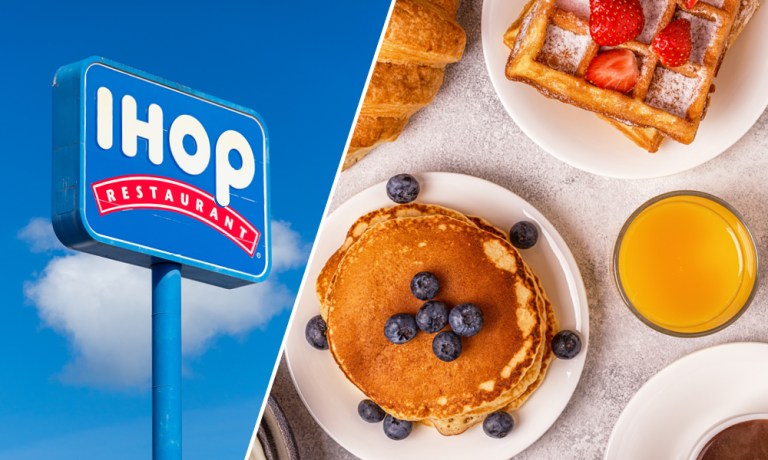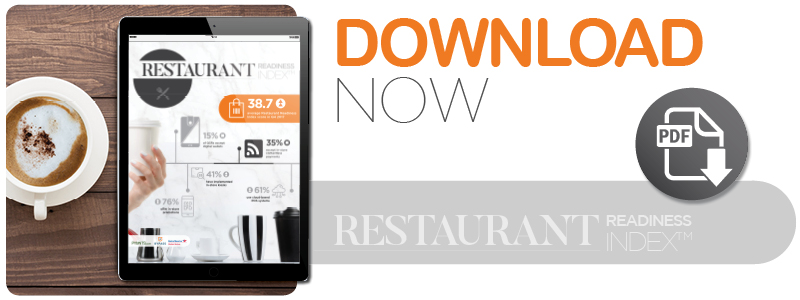IHOP Turns To Mobile Technology To Keep Up With Digital Joneses

There isn’t much separating the best from the rest when it comes to QSR innovation – except when it comes to in-store payments. Research inside the latest Restaurant Readiness Index reveals 57 percent of top QSRs accept contactless payments and 43 percent accept QR codes, while just 11 and 3 percent of the worst-ranking merchants can say the same. See what else sets top merchants apart, and why 80 percent of QSR readiness comes down to 15 features, inside the Index.
When it comes to keeping restaurant customers happy, convenience is king. Modern diners want what they want, right when they want it — and if they can’t get it from one restaurant, they have no problem walking into another that offers a speedier or more convenient experience.
Recent research indicates that diners cite convenience as one of the most important features offered by their go-to establishments. Restaurant customers placed more orders digitally and ate more meals away from restaurants in 2017 than in any other year on record, and projections say those figures will continue to grow in the months and years to come.
These rising expectations have even previously resistant restaurants investing in mobile ordering and other technologies, including pancake chain IHOP. In a recent interview with PYMNTS, executive director and head of IT Michael Chachula discussed the Amazon and Uber effect on the QSR industry, and how it challenged IHOP to debut its first mobile app in late 2017.
“The reality is that this all came about from customer demand,” Chachula explained. “The Amazonization and Uberization of our society has really removed friction, made convenience a top priority and put it top-of-mind for most customers, whether it be retail, restaurants or really any type of purchase. That’s really what drove us down the path of creating an IHOP mobile app and investing in other technology.”
Building from the Ground up
After watching competitors like Waffle House and Denny’s add mobile purchasing capabilities, IHOP decided in early 2017 that it was time to add some of its own.
Rolling out its first mobile offering meant deciding which features would make digital ordering suit the needs and preferences of IHOP’s customer base, including many who had been patrons for more than 50 years. Delivering on that took a “Herculean effort” that spanned nine months, according to Chachula.
Enabling a seamless ordering experience means customers can place and pay for orders on the app. They can search nearby locations and choose one from which to shop, then look over that location’s options before ordering directly from the menu. Customers can then make in-app payments using American Express, Discover, Mastercard or Visa credit or debit cards.
“When we were building the app, we really tried to just make the ordering process as seamless as possible for folks to get it into their cart and pay,” Chachula said. “It was also about making sure the app was reliable and consistent, so that customers could have confidence in purchases they were making there and know what to expect.”
IHOP wants to make it even easier for customers to place an order, working with Internet of Things (IoT) technology providers to add new ordering streams in the future. It recently partnered with Google to allow for mobile orders placed via Google Assistant or Google Home, and with IBM and General Motors (GM) to add one-touch ordering and payment to 2017 and 2018 GM automobiles.
“When you think about this digital evolution, it really all comes back to the idea of removing friction,” Chachula said. “It’s about making things more convenient, and using mobile technology, the Internet of Things or whatever comes next to provide a fully immersive experience for guests.”
Changing Technology, Changing Customers
But making the ordering process more convenient isn’t much help if those items aren’t ready when customers arrive because they’ve been skipped or forgotten — issues that often arise when rolling out mobile order-ahead offerings. To combat this, IHOP programmed its service to feed digital orders directly into the kitchen’s display system, ensuring that mobile and online orders are integrated into its kitchens without interruption.
Larger behavioral changes have come on the customer side of the equation, Chachula explained. Like other restaurants with such offerings, IHOP has seen an uptick in the total size and price of orders. Chachula believes those shifts are motivated by the change in value proposition for restaurant customers.
“When you’re sitting at the table and grab the menu, you can just ask your server to bring you something extra,” he said. “But if you’re at home and then remember that [something extra], you’re not going to take off your pajamas to pick up more food. So, what people tend to do is say, ‘I know I might want this,’ or ‘I think I might want this,’ and they place a larger order, even if they end up saving food for leftovers the next day.”
The convenience factor also plays into the larger ordering size, as customers who are planning to order will often see if whomever is around them — friends, coworkers or family members, for example — also want to order, thus leading to bigger checks.
Sticking Around for the Long Term
While the company is focused on making it as easy as possible for customers to order and pay, simply offering the ability to place an order isn’t enough for modern customers with higher digital and mobile expectations. IHOP’s internal research has found customers will often place an order via a mobile app, then delete the app after the transaction is completed to save space on their phones.
The company wanted to provide an app that would stay on a customer’s phone long after a purchase was completed, Chachula said, giving IHOP a chance to continue to connect and interact with its customers.
“We really wanted to make this app sticky so it would stay on customers’ phones, and you can’t just do that with useful or cool features,” he explained. “It has to be done through marketing and appealing directly to customers via the mobile app. If they are mobile users, email or some other kind of marketing might not be the best way to connect with them.”
IHOP has so far used push notifications to present promotional offers and information to customers and encourage them to keep the app installed. In the future, Chachula said the company plans to use other mobile means to connect on a more personalized level.
It is also working to widen the number of accepted payment methods to meet rising customer expectations, including the use of mobile wallets and even cryptocurrency down the road.
After all, when it comes to keeping restaurant customers happy, offering convenience is still the key to staying on top.
The PYMNTS Restaurant Readiness Index, a Bypass and Bank of America Merchant Services collaboration, is designed to analyze how QSRs are doing when it comes to innovation. Namely, are they being innovative and are technological features enhancing customer experiences?
To complete the Index, PYMNTS studied 178 QSRs, including six large restaurant chains, in 10 different segments and two groups of restaurants. The bulk of the sample includes 172 restaurants that range from eight to 2,630 locations.
